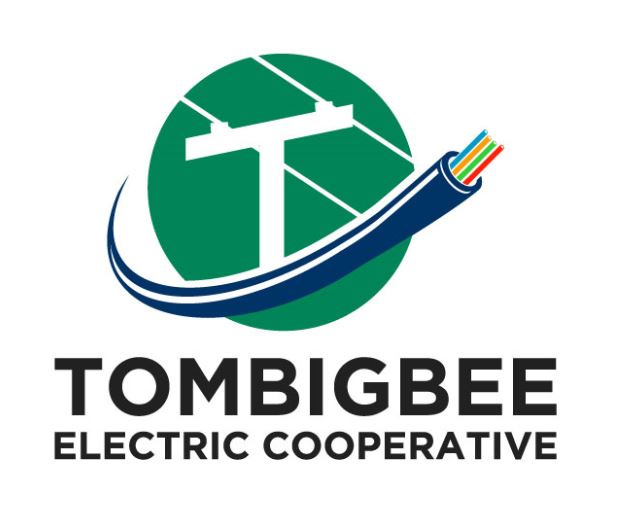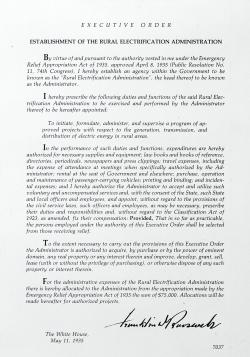In 1935, only 11% of rural homes in America had electricity. It was because of this that President Franklin D. Roosevelt created the Rural Electrification Administration (REA). Its purpose was to act as a loan agency to cooperatives in an effort to provide electricity to rural America. Today, there are just over 800 electric cooperatives that serve 42 million people in the United States. There are 18 million businesses, homes, schools, churches, farms, irrigation systems, and other establishments that are being serviced by 2.5 million miles of electric distribution lines. These lines cover 3/4 of the nation's landmass.
Tombigbee Electric Cooperative was formed from the need for electricity to the local citizens that were living in the rural areas of Marion, Lamar, and portions of Fayette counties. The citizens living in the rural areas of these counties made several attempts to get electricity with no success. It was felt that because these people were farmers who went to bed early, they wouldn't produce enough energy usage to be profitable and that they wouldn't be able to afford the electric bill.
With a lot of determination for making life better for these rural farmers, John A. Mixon, Robert L. Pennington, Hezzie T. Matthews, Jessie H. Cole, Alonzo A. Prater, George P. Loden, Arthur Voce, Romie Webb, and James L. Smith led the charge in going door to door getting people to agree to pay the membership dues needed to form the cooperative. It was on May 12, 1941, that they had achieved this first goal and Tombigbee Electric Cooperative was incorporated in Vernon, AL. On May 20, 1941, the first board meeting was held and Robert L. Pennington was named president, Rommie Webb was named Vice President, and Hezzie T. Matthews was named Secretary and Treasurer. On July 15, 1 941, the dream of electricity became one step closer to reality when REA approved a loan of $400,000.
Construction of the first lines began almost immediately, but came to a halt with the beginning of World War II, when it became almost impossible to buy the materials needed to build. When the war ended on August 15, 1945, and everything started getting back to normal, construction resumed. It was on February 12, 1946 that the dream became reality and the first lines belonging to Tombigbee Electric were energized. This line consisted of 12 miles and 22 consumers on the road from Guin to Sulligent.
Between then and now, there has been a lot of hard work and dedication from a great number of people to make this cooperative what it is today. The goal in 1941 was to get electricity to the rural areas of Marion, Lamar, and Fayette counties and that goal stands today. We will provide you with the electricity that you need with the best service at the lowest possible cost.

